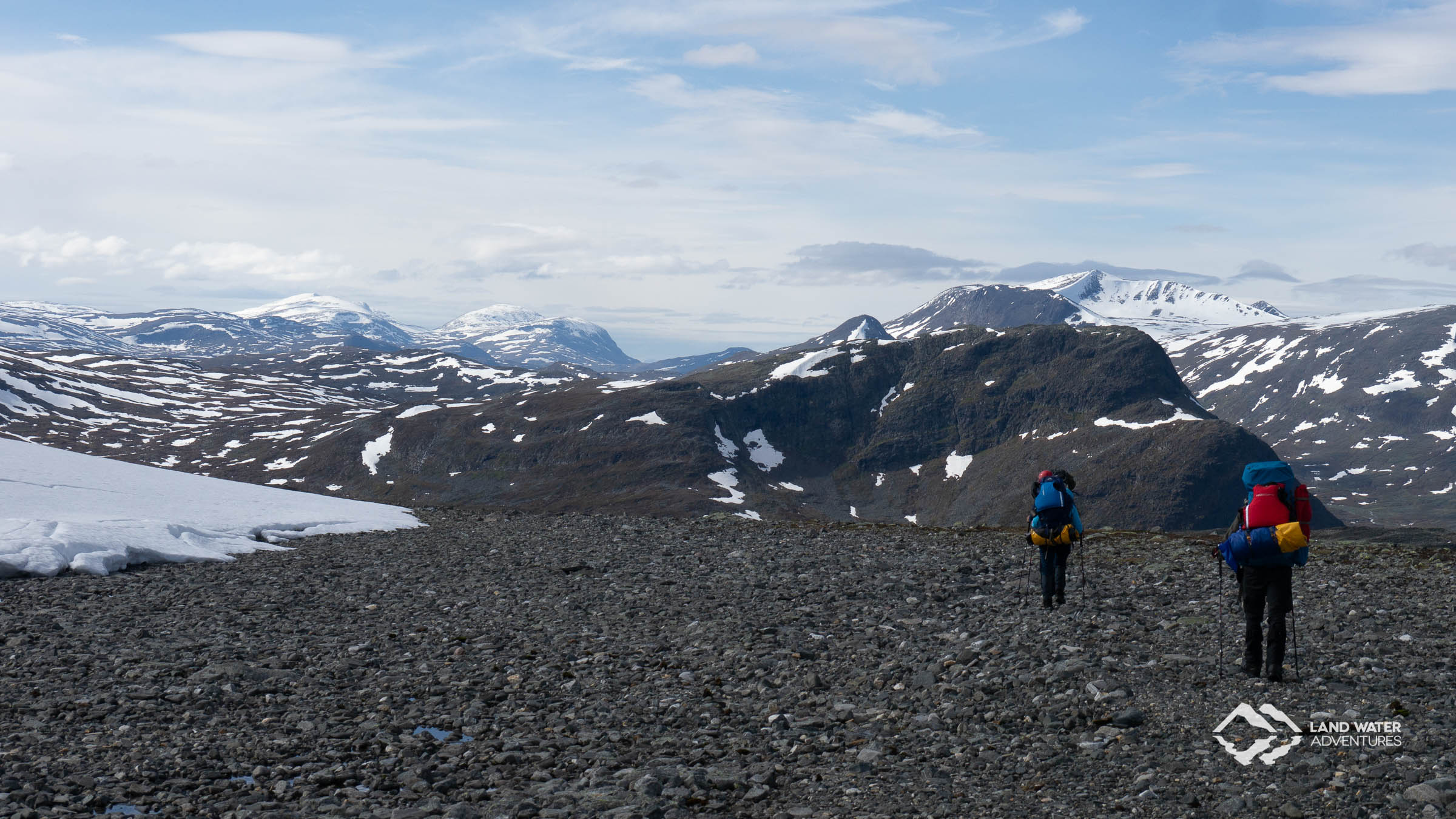
Frozen lakes - Polar circle expedition tour Packrafting Laponia 2018
I'm surprised. I lie in a T-shirt in the sun, a mild breeze blows around my nose. Next to me lies Peter, reading and similarly lightly dressed, Ena and Jens walking dreamily through the wonderfully gentle landscape. It is the penultimate day of our journey through the Nordic wilderness, and everyone is positively surprised. Actually, the whole tour was a series of surprises, but this one is out of the ordinary.
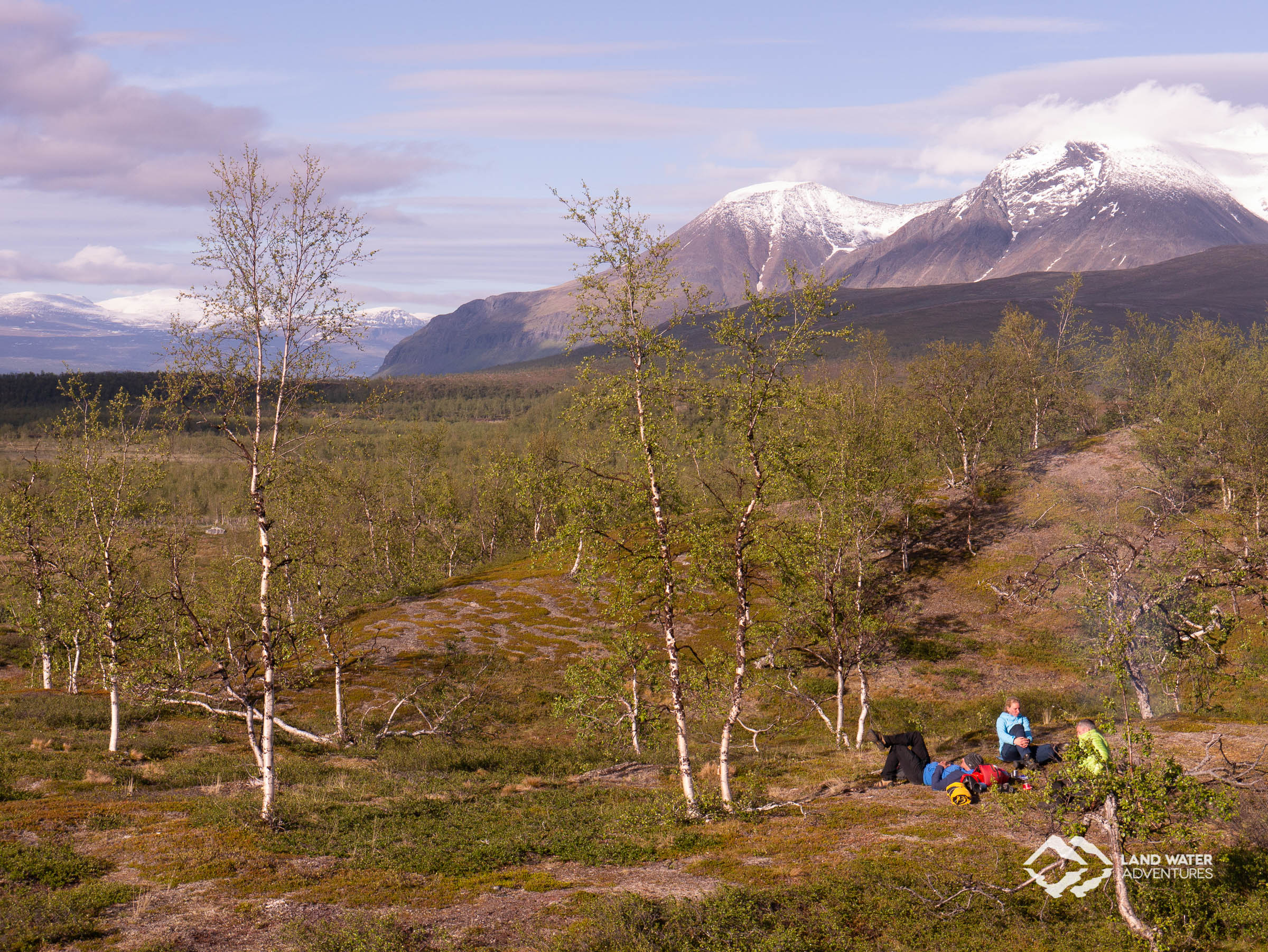
It all began when Peter and I, in our role as guides, arrived one day earlier to do some errands and to leave for the wilderness the next day, after the arrival of the first pilot, with the participants arriving with them. The first surprise was our missing luggage. We stood in the pouring rain in front of the Lulea Airport - without luggage! - and no one could tell us where it had gone. Imagine our excitement, worrying the next day without equipment and telling the arriving participants that the tour might not take place. The fact that the airport staff waved relaxed and had nothing more to contribute to our misery than a laconic "It will be on the next plane" was also not very helpful.
But they were right. After a worried night we collected Ena AND OUR LUGGAGE from the first plane, picked Jens, who had already arrived the day before, from the hotel and drove with a silent driver and in surprisingly good weather towards our destination - the UNESCO World Heritage Laponia. After about 5 hours driving through the flat and endless coniferous forests of Lapland we saw for the first time the partly rugged, partly gentle mountains of the Skanden and with constant approach to our entry into this last wilderness of Europe the anticipation grew with all participants.
When we got so close that we could already identify parts of our tour, the next surprise was revealed. At the end of June the mountains were still covered with snow on a scale we had never experienced before. Peter and I exchanged worried looks - what if some passages of the tour were still impassable?
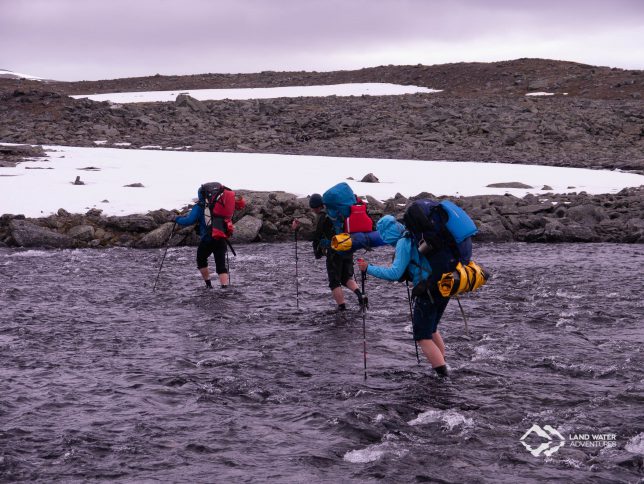
Unsere Grübelei wurde jedoch von der Ankunft am Ziel und damit von unserer ersten kleinen Bootsfahrt unterbrochen. Wir zeigten Ena und Jens die Einstiegsstelle, von wo aus wir ein Stück See überqueren mussten, um an den Fuß des Berges zu gelangen, dessen Hochplateau unser Tagesziel sein sollte. Wir paddelten, packten, begannen unseren Anstieg und wurden auf dem Plateau von einem Wind überrascht, der uns fast wieder den Berg hinunter gedrückt hätte. Aber auch wenn das Fortkommen dadurch nicht leichter wurde, die Aussicht war atemberaubend. Hinter uns erstreckte sich bis zum Horizont der von Seen und Flüssen durchzogene, boreale Nadelwald und vor uns bäumten sich die schneebedeckten Berge Laponias auf. Wir suchten uns eine halbwegs windgeschützte Stelle am Hang, bauten unsere Zelte auf und verbrachten unsere erste taghelle Nacht in der Wildnis.
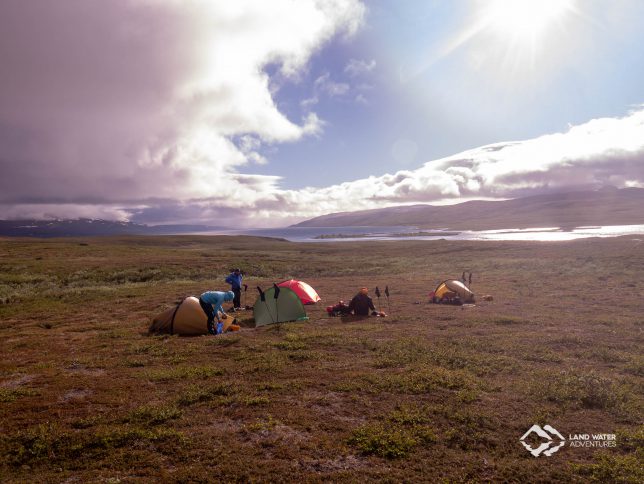
Am nächsten Morgen war der Wind nicht weniger geworden und sollte uns auch nahezu über die gesamte Tour begleiten. Nach dem Frühstück, das wir zusammengekuschelt hinter einem schützenden Fels verbrachten, brachen wir auf. Vor uns lag das immerhin schneefreie Plateau, an dessen Ende ein steil eingeschnittenes Kerbtal darauf wartete von uns durchquert zu werden. Aus der Ferne waren große Schneefelder auszumachen und nach wie vor begleitete mich und Peter die Sorge, dass wir auf unerwartete Hindernisse treffen würden. Je näher wir dem Tal kamen, desto rauer wurde die Landschaft. Wo vorher noch Gras und Moos den Boden bedeckten, ragten große Findlinge aus dem Boden. Überraschenderweise entpuppte sich der Schnee als hilfreich, denn er bedeckte zum Teil die überall auftauchenden Geröllfelder, deren Überquerung sonst höchste Konzentration erforderte. Langsam, aber stetig stieg das Tal an und nach einiger Anstrengung erreichten wir die kleine Hochebene, die an seinem Ende auf uns wartete. Spätestens hier packte uns alle das Gefühl mittendrin zu sein in dieser rauen und menschenleeren Gebirgslandschaft. Vor uns fiel der Hang steil ab und gab den Blick frei, auf ein tief eingeschnittenes und von hohen Gipfeln gesäumtes Flusstal, hinter uns glitzerte in der Ferne der See, den wir gestern überquert hatten. Der raue und kalte Wind lies kein längeres Verweilen zu. Nach etwa zwei Stunden mühsamer Hangquerung erreichten wir flacheres Terrain und bauten unsere Zelte zwischen den unzähligen kleinen Seen und Tümpeln auf.
From our campsite we had a wonderful view of the Ruonas, a mountain like a huge boulder, whose southern flank rises gently from a high plateau, while its northern flank plunges vertically into the depth until it reaches the bottom of said valley. We wanted to climb it the next day and we did. After we had climbed the plateau, we threw our luggage behind a rock and almost danced up the mountain, happy to be rid of the heavy weight. The panorama from up here was one of the most impressive of the tour. Deep at our feet the river meandered through a green valley and 360 degrees around us the inhospitable mountain world rose up. We could have spent hours here, but there was still a long way to go. Especially the next kilometres were exciting for us guides, because during our exploring tour we groped through thick fog. In our memory the way down to the valley and the following ascent to the next plateau was exhausting and hard to find.
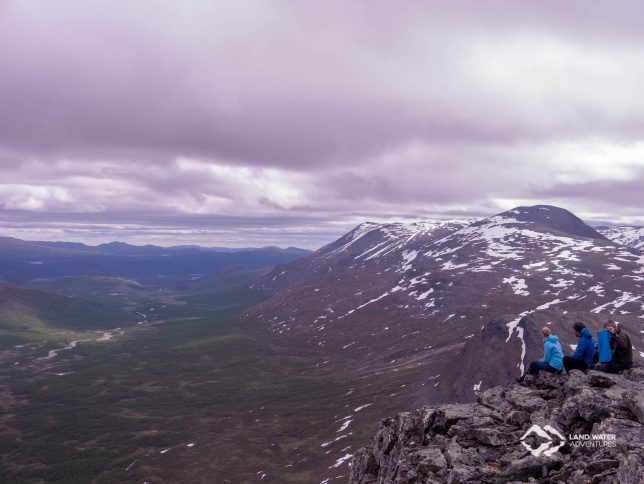
But - surprise - with good visibility we found the gently descending channel, which we had looked for so long during the last tour, at first go. After we had waded through some tributaries, we gathered strength at the sparkling and crystal clear upper reaches of the river, which we had seen meandering through the valley from Ruonas. To our luck the sun shone for a short moment, so that we could have a longer break between circling sea eagles and reindeer herds, whose young animals obviously turned pirouettes for fun on the snow fields.
That was also necessary, because in front of us lay the steepest ascent of the tour. A vertical and wet slope, which we climbed step by step. Our goal for the day was the first lake we wanted to paddle. It lies in a narrow valley between high mountains that are still covered with snow. So we hiked over the green plateau, crossed by streams, in a mixture of sunshine and short showers. The closer we got to the lake, the rockier the ground became and the more stormy the wind became. Jens and Peter had fallen back quite a bit in the meantime when Ena and I were able to take the first look at the lake.
And here awaited us the next big surprise. The lake was still completely frozen. A crossing in Packraft was out of the question, a hike after the exhausting day was out of the question and we couldn't put up a tent in the scree or in the wind. So we walked a good way back until we reached a place that was halfway sheltered from the wind and level, set up our tents, huddled together behind a stone to eat something and disappeared into our tents. The wind that night was so strong that my tent poles bent into an S.
The next cold and windy morning: So the lake was frozen over. So be it. And the boats stayed in their backpacks for another day and we walked around the lake, at the end of which the valley narrows further, until we reached a relatively steep gorge, in which a stream flows that feeds the lake. To its left and right, the area that was still suitable for walking was completely covered with snow. We fought our way through the snow fields in wind and rain and reached the highest point when suddenly the sun broke out of the clouds.
It is incredible how in this area the sun decides whether you are in the Shire or in Mordor. A landscape that seconds ago seems inhospitable and hostile to life is suddenly the sweetest place on earth. We paused, took photos and stupid jokes and set off for the last leg of today. Tomorrow we should finally be able to put our Packrafts in the water.
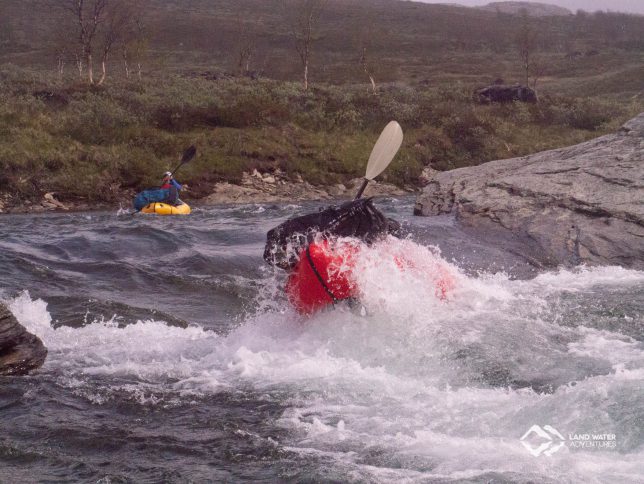
The next day was friendly at first, but the closer we got to Sarek, the more the sky darkened. When we reached the highest point of the day's stage, we saw what Peter and I had already suspected. The glaciers of Sarek seemed to attract the bad weather from the whole area.
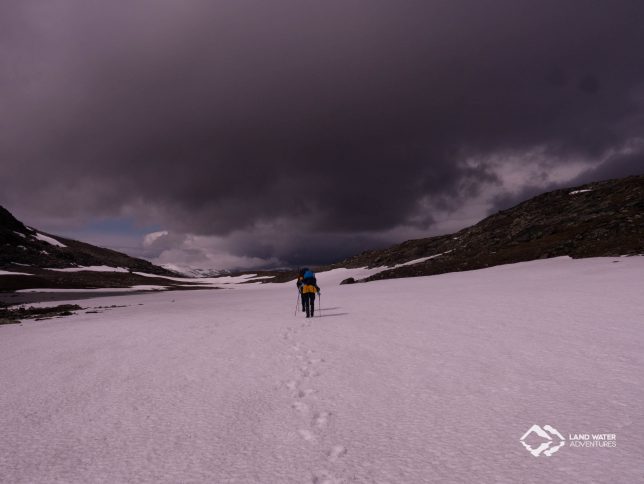
Like a pot lid, a dense black cloud lay exactly over the valley where we wanted to climb into the first river. One can imagine that moving out in such weather was not an attractive view. Nevertheless, we descended to the river Alep and just at the moment we dropped our backpacks the sun came out. In no time at all we saddled our boats and started the first stage on this completely untouched wilderness river. We let ourselves drift and enjoyed the panorama, then we had to step on the gas again to get through the partly strong rapids, and had covered a distance within shortest time, for which we would have needed loosely half a day on foot. Shortly before the waterfall, which falls into the much deeper lake and which is also called the gate to the Sarek, we climbed out and set up the most wind-protected camp of the tour so far.
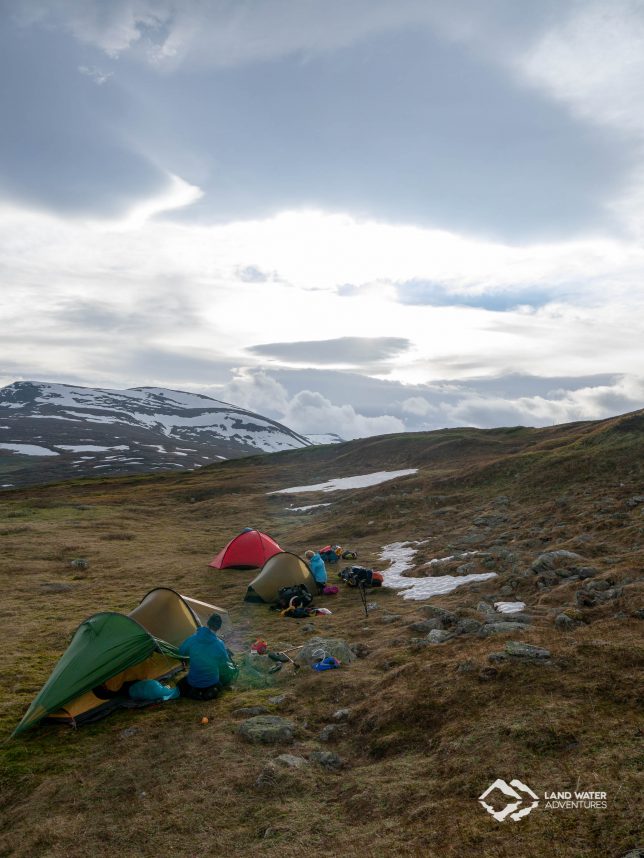
The next day we jumped directly into our paddle gear, shouldered our boats and carried around the short piece of waterfall, before entering the Milädnö directly. One of the most beautiful and untouched rivers I know - Packrafting makes it possible. Until the point where Peter tore a hole in his boat in a rapids and we had to operate on a gravel bank, the day flew by. But even after that we splashed along and had fun in the regularly recurring white water until we got to our exit point. Here we started our first fire of the tour and sat for a long time in the never setting evening sun, watching reindeer crossing rivers and chatting.
The following day also began promisingly. For the entrance into the Ladejakka we had to walk another two hours through typical Lapland willow bushes and swamps until we arrived unerringly below a mighty waterfall where we watered the boats. During the day, however, the weather worsened and after we had the second capsize at a massive spot on the speedometer, it was clear that we didn't want to paddle the river to its mouth in the Viviaure, a large lake. So we took shelter in the first hut of the whole tour, warmed up and hiked in the rain for the first time on a hiking trail. It is unbelievable how fast you can get on when you don't have to look for the way anymore.
Gegen Abend verbesserte sich das Wetter wieder und wir kampierten kurz oberhalb des Abflusses des Viviaure. Hier hatte der „See“ wieder Strömung und auch die letzte Paddeletappe unserer Tour ging mit Spaß und Geschwindigkeit vorüber.
We cleaned the boats and at two o'clock in the afternoon we climbed up the slope a bit, when we came to a quite large hollow with birch trees, which looked so protected and cosy, that we decided to stay here. And here we lie, in a T-shirt, enjoying the sun and the wonderful landscape around us and are surprised that we are warm although we don't move and don't wear everything we took with us. The fire is crackling and the usual melancholy that always grips me when I know that my time in this untouched and unique landscape is over. Even though Lapland is not always friendly, sometimes inhospitable and hard, it has a strange beauty that I have never seen anywhere else. I'll be back - I promise!
Jannis, co-leader of the expedition tour participant of the expedition Laponia of 2015, wilderness guide, biologist and rarely to be seen without binoculars, with which he indulges his passion, ornothology. Read more about Jannis here.
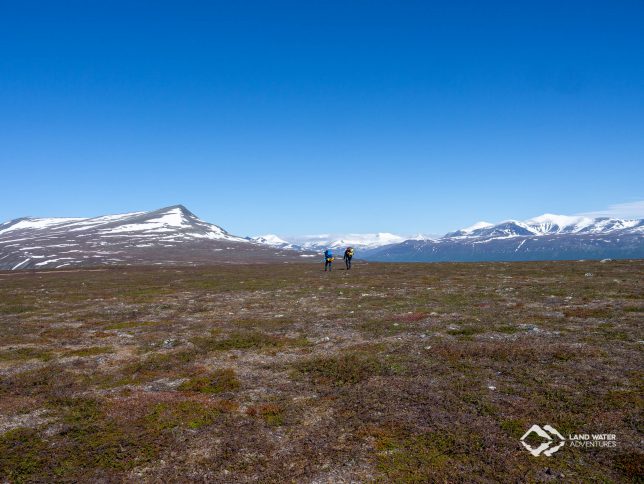
https://www.land-water-adventures.com/en/trainings-expeditions/laponia
For all those you see in the film and in the pictures, the way to the expeditions led via Multiday Trainings in the Hunsrück or the Bavarian Forest and whitewater trainings like those in the Alps or at the Soča.
It takes a lot of skills, to enjoy and master expedition locations like Albania, Albania, Iceland or Canada. That's why we have our course program.
Would you like to become part of an LWA expedition? Then get in touch with us and we'll take a look at your personal route.
You May Also Like
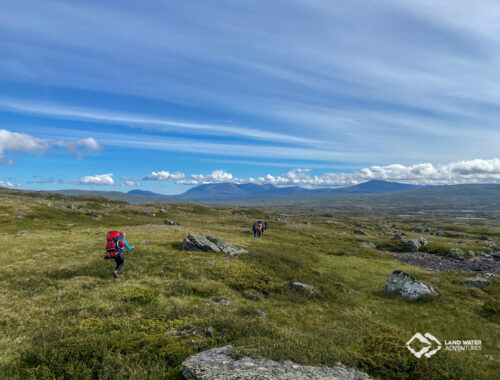
Expedition Tour Norway 2024
22.07.2024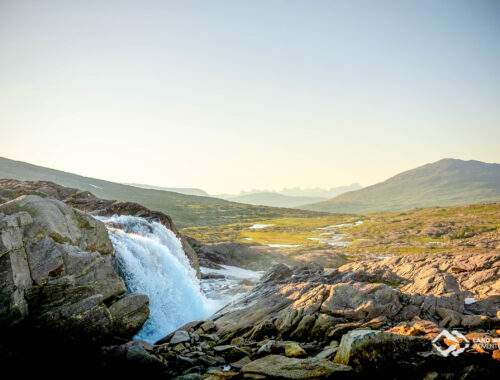
Welcome to Elfenland - Expedition Tour Arctic Circle 2024
23.08.2024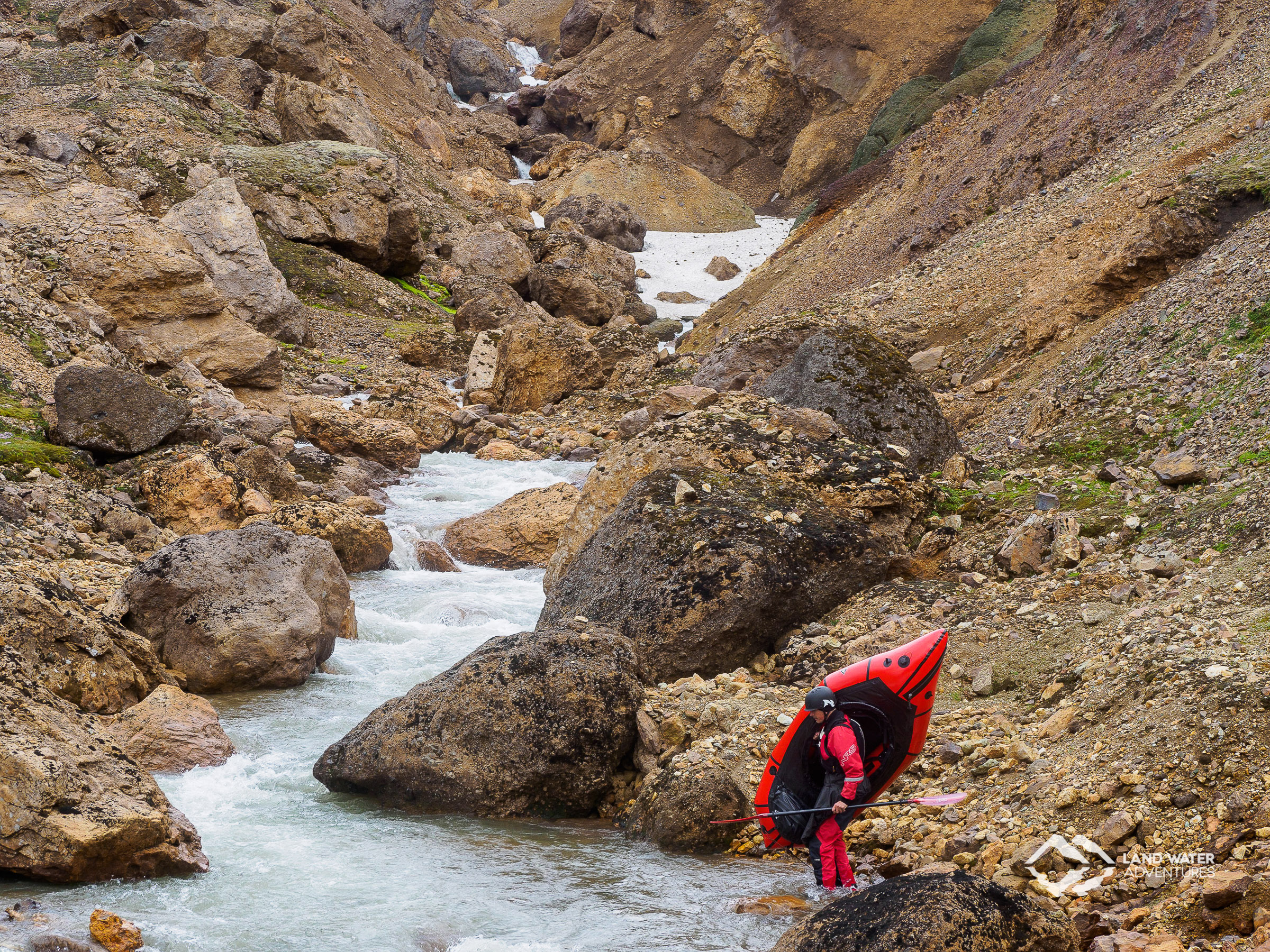

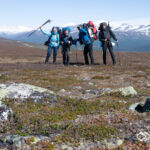
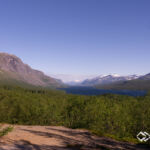
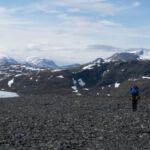
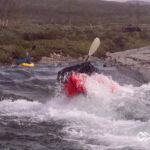
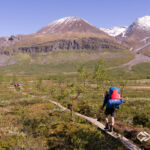
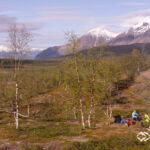
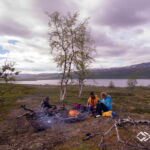
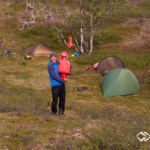
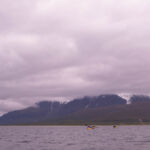
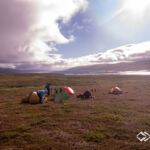
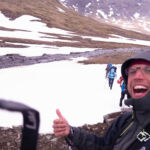
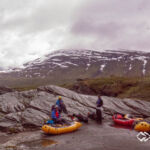
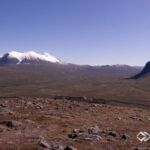
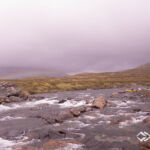
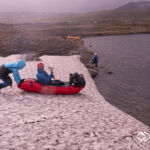
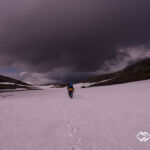
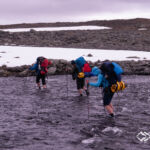
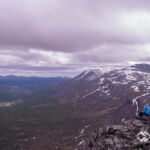
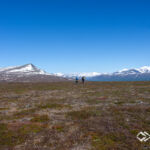
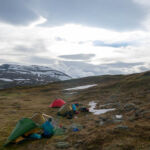
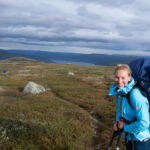
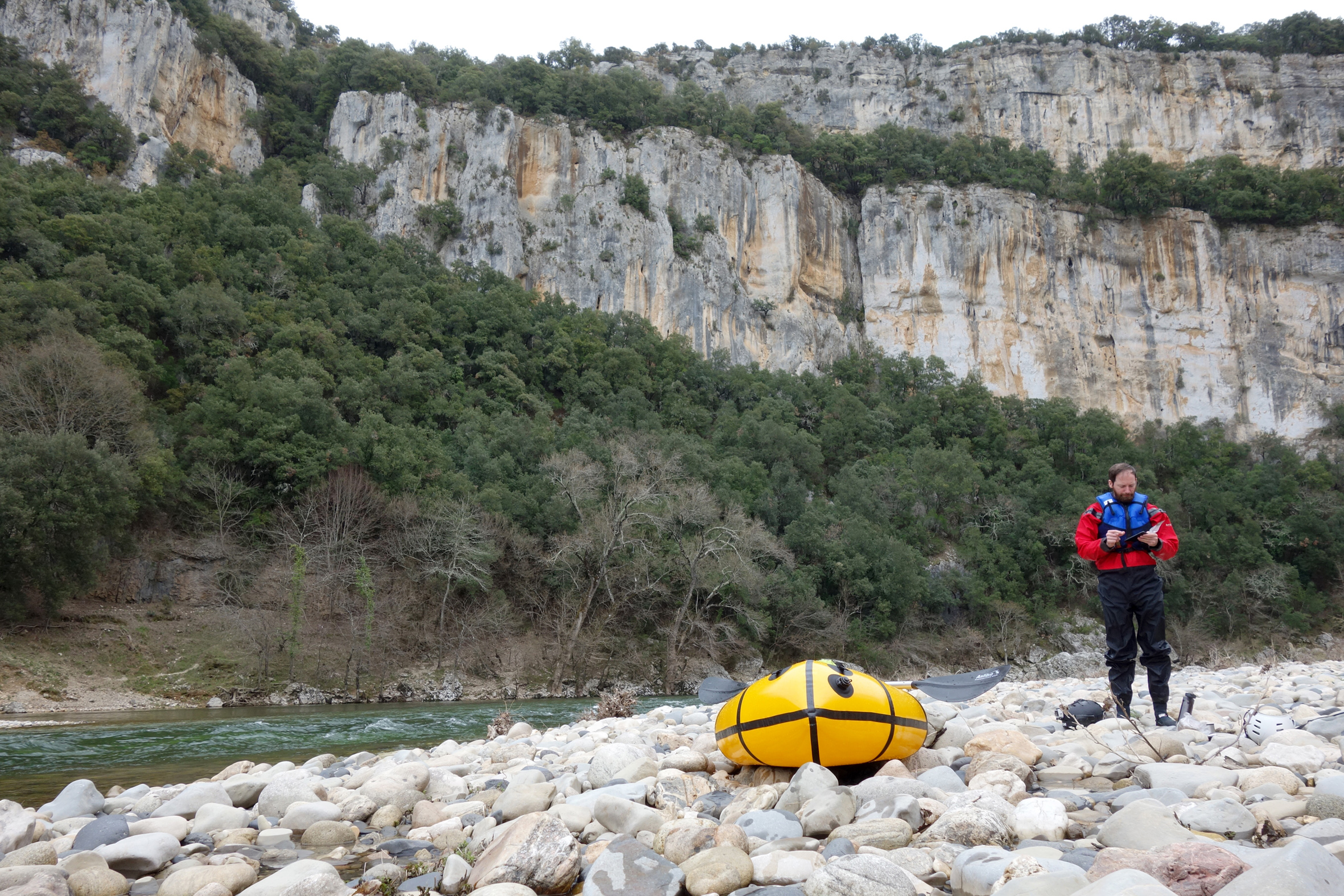
2 Comments
Pingback:
Pingback: